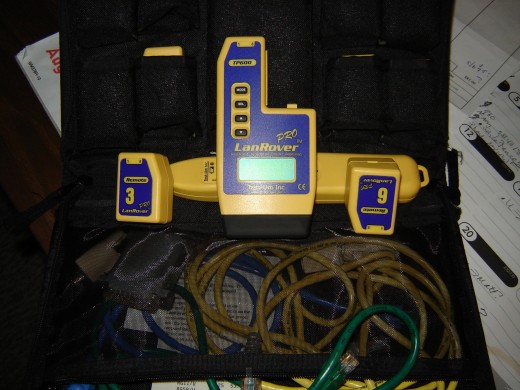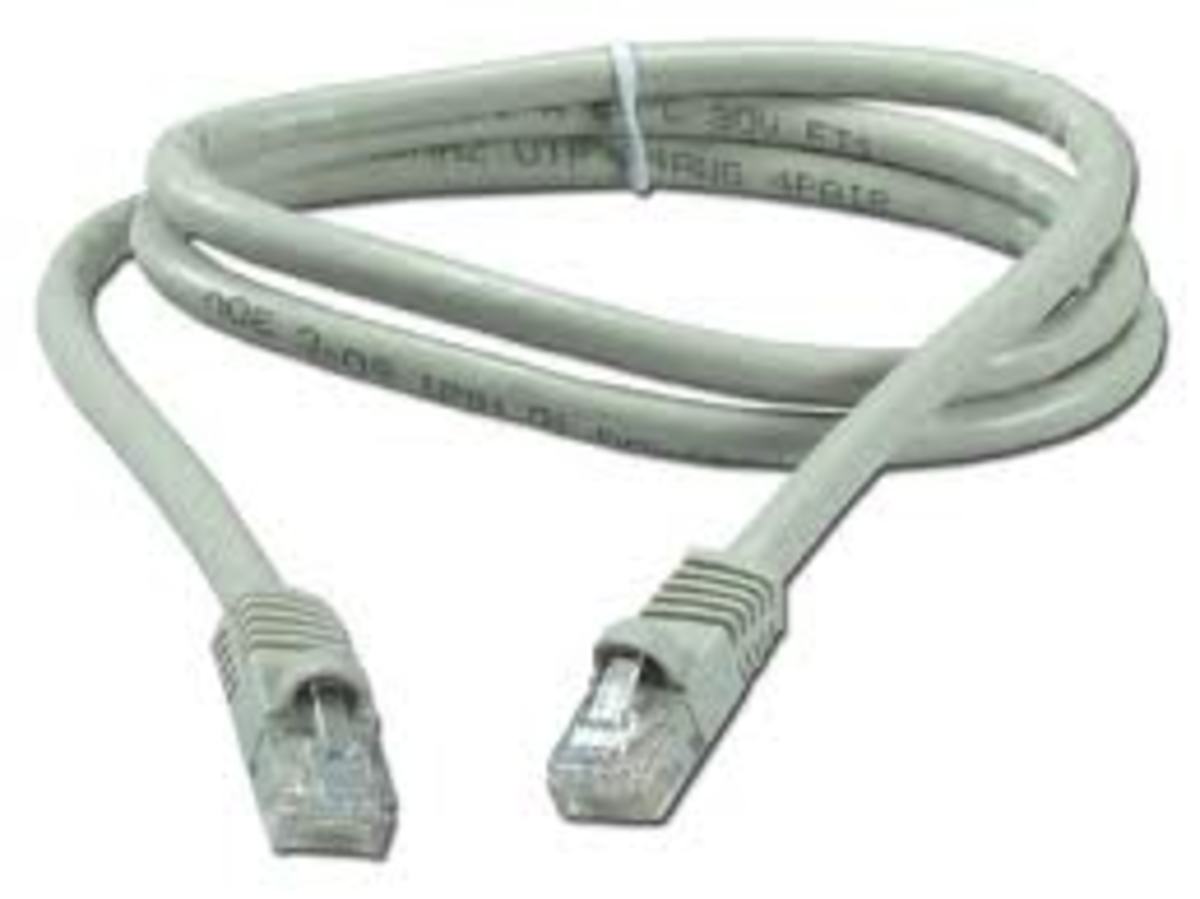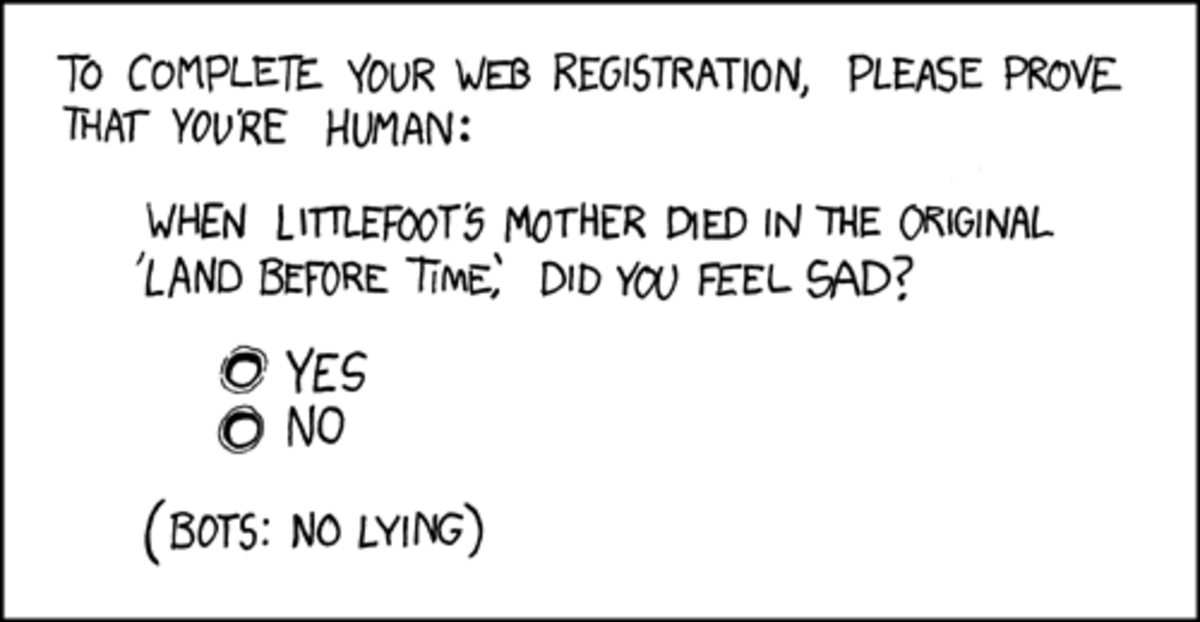Tools for techs - Ethernet Network Cable Tester
If you are going to be doing any kind of network support, you need a cable tester. Even if you are not a support geek and don't know a ping from a netstat, if you own a network, you need tools.
I bought the set shown below a long, long time ago. I don't remember what I paid for it. It definitely wasn't the cheapest thing I could have bought, but I don't believe in stinting on needed business equipment.
Having better equipment than your competitors opens doors that will not open otherwise. Even if you never use the equipment enough to justify its purchase, getting inside may give you access to other business that will repay you many times over.
Do NOT go cheap on your tools!

Multiple Test Ends
The one I have comes with nine terminal ends on it (though I lost one of those many years back so now have only eight). Having that many terminators is usually much more than a troubleshooter would need and is more apt to be used by a professional installer. However, I have found having multiple sets to be useful more than once.
For example, several times I have walked into newly wired buildings and found that nobody bothered to mark one or both ends of the cable runs. The attitude of some installers is that it's a network - it doesn't matter because everything goes to a switch anyway.
But it does matter when you aren't plugging everything in or when there is a cable fault. Having multiple terminal ends makes identifying runs much quicker.
The strangest thing I ever walked into was where the office drops were marked A, B, C, D and so on, but when I got back to the patch panel, that was 1,2,3, 4 and both were done with the same dark green magic marker, apparently by the same hand. My first thought was, OK, A is 1 and B is 2, but no, it was entirely random as far as I could tell. It made no sense, but again, the tester helped me sort it out quickly enough.
Using the Tester
Each terminator has an identifier number and if it is plugged into one end of a run and you put the tester on the other, you see the ID number on the tester. I would plug all of the ends into the patch panel end and then walk around with the tester to find the other end. Of course you could do the same thing with a smaller kit, but having more cuts down on the time.
The same is true when troubleshooting. Sometimes I have several suspect runs to test; it can be easier to have multiple ends all hooked up and ready to go.
Testers like this show you if the wiring is done correctly and if any pins are missing. You'd be surprised how often installers make mistakes. Of course I also have punch-down and crimping tools to fix anything I find.
The tester can test the length of the run. The point of this is not just that ethernet cable runs are limited in overall length, but also that a long reading on a cable you know should be short indicates a problem - either the installer left a big coli of wire in the ceiling somewhere or there is something very wrong with the cable.
There is also a tone generator function. You attach the tester to one end of a run and set it to generate a high or low pitched tone. The wand is used to find the matching wire somewhere else in the building. I couldn't even tell you how many times I have changed the 9 volt battery in that thing, never mind how often I have used it.
Stuff I have found
I have found the darnedest things while troubleshooting. How would you react to finding voltage present on a cable that is apparently unplugged at both ends? That's quite the miracle, isn't it? Of course it wasn't unplugged - it was marked wrong and actually one end of it was plugged into a computer serial port!
I have found ancient hubs tucked away in attic space while tracing old networks. These were put in to extend cable length and long forgotten. I have found improper wiring, bare wires, wires chewed through by mice and wires running under carpet or under office chairs.
Some of that I could have found without a tester, of course. But whatever I spent for this set has been paid back many, many times over. It is always in my car, because I never know when I might need it.






